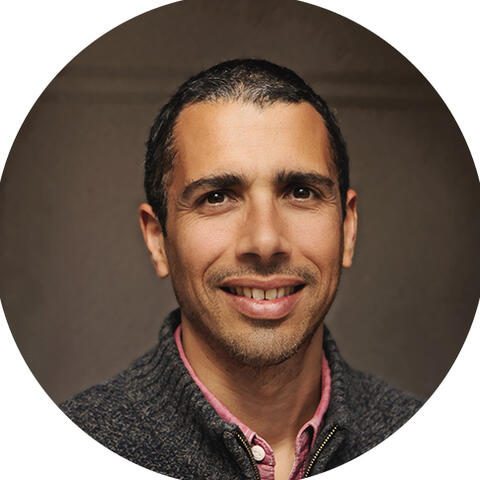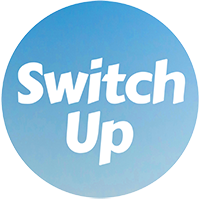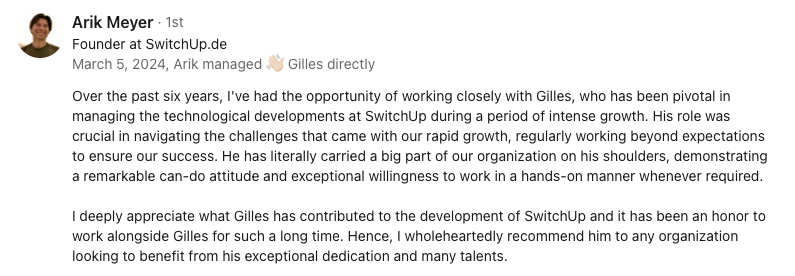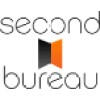Abstract:
The article explores how European startups are leveraging technology to transform workplaces into healthier and more productive environments by focusing on employee well-being. These companies utilize digital platforms and wearable tech to blend work with health, offering tools like virtual counseling, mindfulness activities, and personalized wellness plans through data analytics. Startups like Happify Health and Unmind lead in mental health support, using cognitive behavioral therapy and self-guided programs to enhance employee engagement and awareness. Furthermore, companies like YuLife and Nilo.Health apply gamification and predictive analytics to encourage healthier lifestyles and proactive health management. Immersive technologies, such as virtual and augmented reality, are used for stress relief, providing engaging and accessible mental health support. Successful integration of these wellness tools into daily workflows is emphasized, with strategies including needs assessments and employee involvement in tool selection. Real-world examples highlight the effectiveness of these tech-driven solutions, although challenges like data privacy and digital accessibility remain. Overall, the article underscores a shift towards tech-driven wellness in creating supportive, health-oriented workplaces.
You're at your desk, surrounded by the usual office chaos, and stress is creeping up on you. Sound familiar? You're not alone. As work demands rise, many of us are searching for ways to keep our mental and physical health in check. I remember a time when I was overwhelmed with deadlines and decided to try a meditation app. It was a game-changer, helping me find moments of calm amidst the chaos. Now, tech-driven wellness is transforming workplaces across Europe into healthier, more productive spaces.
These companies use technology to prioritize employee well-being, blending work with health. From digital platforms for mental support to wearables tracking physical activity, they're changing how we think about wellness at work. It's like using fitness apps to track goals or finding calm through meditation.
Let's explore how European startups are supporting employee wellness with these cutting-edge solutions. We'll look at digital platforms enhancing mental health, data analytics personalizing wellness plans, and the use of virtual and augmented reality for stress relief. Whether you're tech-savvy or just seeking balance, discover how technology is shaping a healthier future.
Tech-driven wellness in European startups
European startups are using technology to create healthier work environments. With digital platforms and wearable tech, they're boosting employee well-being, balancing productivity with personal health.
Digital platforms for mental health
Digital platforms for mental health are on the rise. Companies like Happify Health offer virtual counseling and mindfulness activities using cognitive behavioral therapy (CBT). Studies show these methods reduce stress and improve life satisfaction. Happify uses data to tailor its services, helping employees manage stress better. Following Happify's lead, others like Unmind are changing workplace mental health.
Unmind offers self-guided programs and assessments designed by clinical psychologists. This ensures resources are effective and relevant. Organizations using Unmind report better employee engagement and mental health awareness. Like tracking fitness metrics, Unmind provides insights that empower employees to manage their mental health, fostering a supportive workplace.
Meditation apps like Calm and Headspace help reduce stress and promote mindfulness. Regular use can enhance workplace mindfulness and stress management. Features like guided meditations echo the use of fitness apps for tracking progress and motivation. These tools aid stress management and enhance overall workplace well-being.
Bullet points for app features:
-
Calm:
- Sleep stories and relaxation music
- Breathing exercises
- Guided meditations for stress reduction
-
Headspace:
- Mindfulness exercises
- Focused meditation courses
- Daily meditations and mindful workouts
By using digital platforms, European startups address mental health needs and create a resilient workplace culture. Now, let's look at how wearables are promoting holistic wellness.
Crafting personalized wellness through data
Using data analytics to personalize wellness
Wellness is evolving, and companies are using data analytics for personalized health assessments and wellness plans. Imagine starting your day with a health report suggesting exercises or diet changes based on yesterday's activities. This isn’t sci-fi; it's happening now. By analyzing health metrics, companies offer wellness plans that target health goals and improvement areas, boosting engagement.
YuLife, a London startup, combines life insurance with wellness benefits through gamification. They use data analytics to provide personalized wellness advice, encouraging healthier lifestyles. Just as I use data to track my fitness journey, YuLife uses it to engage employees and motivate healthy behaviors.
Startups can implement data-driven wellness programs by first gathering comprehensive health data from employees, then using analytics to identify patterns and tailor wellness plans. Regular feedback and updates ensure these plans remain relevant and effective.
Predictive analytics: A proactive approach to health
Predictive analytics bring proactive health management, letting organizations foresee health issues and act before they become problems. By observing health data patterns, predictive analytics identify risks, enabling timely interventions.
Nilo.Health in Germany uses predictive analytics for mental health services, offering targeted support based on employee needs. This foresight changes health management, addressing issues before they affect productivity or cause absenteeism.
Harnessing behavioral insights for engagement
Behavioral insights from data help design wellness programs that engage employees. By understanding how users interact with platforms, companies adjust offerings to meet preferences, resulting in a satisfied workforce.
Unmind uses behavioral insights to refine mental health resources, enhancing engagement and fostering a culture of well-being. This mirrors how I adjust my fitness routine using workout enjoyment and motivation data.
Immersive technologies in mental health
Virtual reality interventions for stress relief
VR interventions for stress relief engage users by transporting them into relaxing environments, reducing stress through immersive experiences. Studies show these can lower stress levels and improve mental well-being.
VR's impact goes beyond relaxation by engaging users in mental health practices. High engagement and quality immersion maximize VR's mental health benefits. Just as being engaged in a workout is needed for effectiveness, VR requires user involvement for stress relief.
Practical applications of VR include exposure therapy and mindfulness exercises, making mental health support accessible and impactful.
Augmented reality applications in mental health
Guided AR exercises provide immediate stress relief by overlaying calming images into the real world. This seamless integration offers visual aids that reduce stress, like seeing a waterfall or trees swaying in the wind at your desk.
Guided AR exercises enhance mindfulness by offering interactive experiences, making mindfulness practices accessible without needing extra time. This is similar to using apps to track my fitness activities, helping me stay mindful of my physical state.
Integrating wellness tools into daily workflows
Strategies for seamless integration
Integrating wellness tools requires understanding organization and employee needs. A needs assessment helps tailor programs effectively, ensuring they align with goals and culture. Leadership commitment and supportive company policies are crucial in fostering a wellness culture, as they set the tone for prioritizing employee health.
Involving employees in selecting wellness tools boosts adoption and engagement. When employees choose the tools, they're more likely to use them. Leadership also plays a key role by promoting wellness initiatives and setting a positive example.
Ensuring accessibility and reducing friction
Ensuring wellness technologies work with existing systems is crucial for smooth integration. Technical compatibility reduces disruption and fosters a seamless workflow.
Reducing user friction enhances tool adoption. User-friendly tools with robust support systems are more likely to be embraced. Companies can improve user experience by offering training, providing 24/7 support, and designing clear interfaces.
Real-world success stories of tech integration
Effective strategies implemented by startups
European startups adopting tech solutions have improved employee well-being. Happify Health expanded into Europe, using CBT and mindfulness activities to enhance mental health outcomes. This shows how adapting strategies to local needs drives health improvements.
Unmind's success with proactive mental health solutions illustrates the power of engagement. Just as I track fitness progress, organizations benefit from active employee engagement with tailored mental health resources.
YuLife combines life insurance with wellness benefits, using gamification to promote healthy behaviors. By engaging employees through rewarding activities, YuLife enhances health outcomes and reduces healthcare costs.
Overcoming challenges in tech integration
Tech-driven wellness solutions face challenges like ensuring data privacy and bridging the digital divide. Startups adhere to compliance strategies and offer tiered pricing models to ensure inclusive access. For instance, a startup might implement advanced encryption methods to secure data while providing affordable options for smaller businesses.
Through overcoming challenges, European startups lead in integrating technology into wellness programs, setting benchmarks for others. This aligns with using data and technology for health and productivity, both individually and in organizations.
The shift towards tech-driven wellness is reshaping workplaces into healthier environments. European startups are leading this charge, blending mental and physical wellness with daily work life. As companies adopt these tools, they boost productivity and create supportive spaces for employees to thrive.














